SUMMARY
This is AI generated summarization, which may have errors. For context, always refer to the full article.
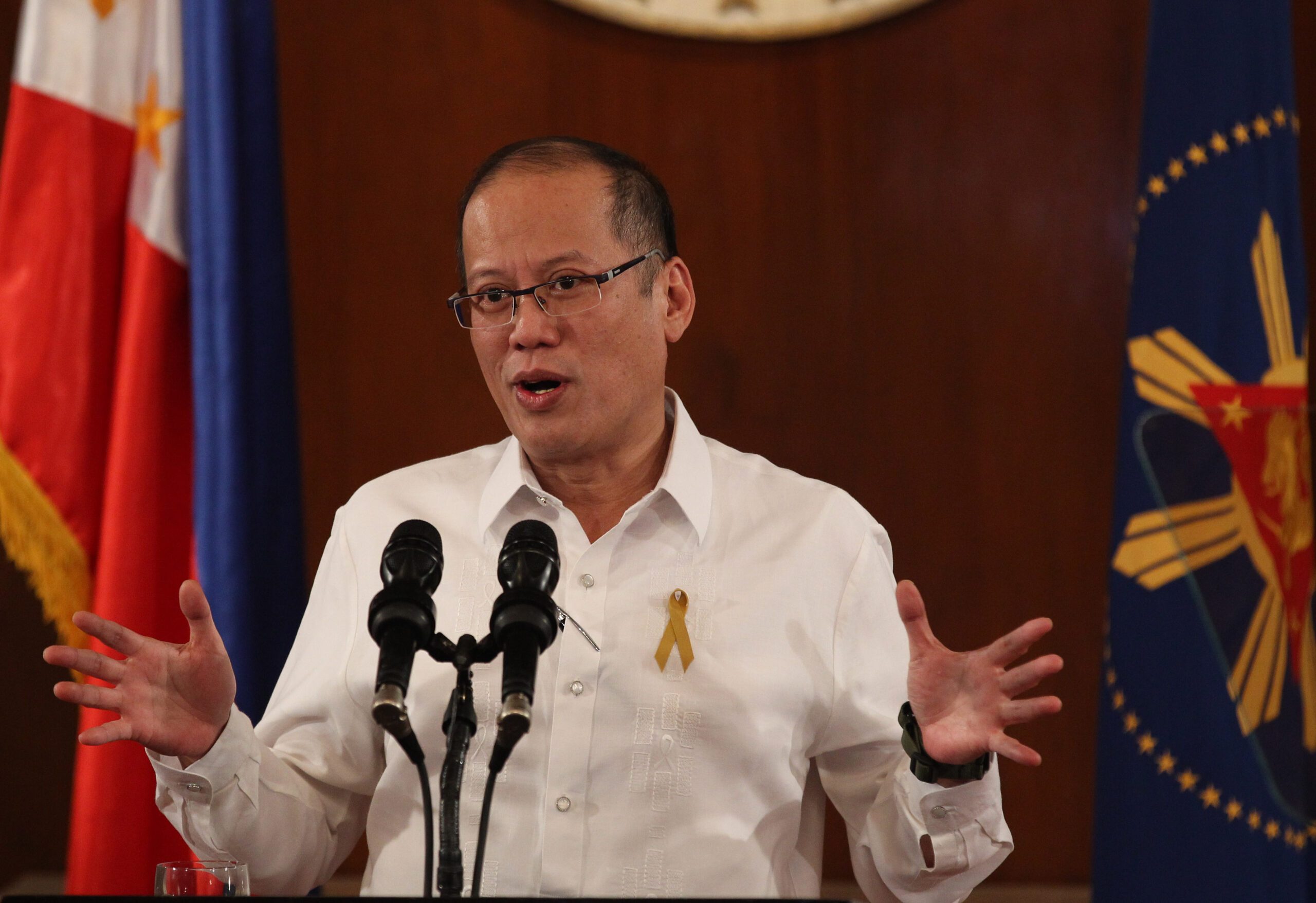
MANILA, Philippines – President Benigno Aquino III began his presidency in 2010, promising reform and a leadership premised on tuwid na daan (straight path). But it has not been a straight and easy path for the President in the judiciary as several administration laws and policies have been challenged by critics before the Supreme Court.
As President Benigno Aquino III delivers his final State of the Nation Address (SONA) on Monday, July 27, Rappler looks back on some controversial policies, laws, and programs that have been questioned before the High Court.
Truth Commission of 2010
What it is: It was one of Aquino’s first acts when he assumed the presidency in 2010: the creation of a Truth Commission, which would investigate reports of corruption allegedly committed during the administration of his predecessor, Gloria Macapagal-Arroyo.
In his 2010 SONA, Aquino said the goal of the fact-finding body, headed by former Chief Justice Hilario Davide, was to “search for the truth on the alleged wrongdoing committed in the last 9 years.”
Among the corruption scandals considered for investigation were the controversial $329-million NBN-ZTE deal, the P728-million ($16 million) fertilizer fund scam, and the “Hello, Garci” scandal.
Took effect: Signed on July 30, 2010
What’s being questioned? Barely a month after Executive Order 1 (EO 1) was signed, several lawmakers and a businessman asked the Supreme Court to strike it down based on the following grounds:
- The EO violates the separation of powers, because only Congress can create a public office and appropriate funds
- The truth commission duplicates the quasi-judicial powers of the justice department and the Ombudsman
- The truth commission violates the equal protection clause in the Constitution by selectively targeting only officials of the previous administration “as if corruption is their peculiar species even as it excludes those of the other administrations, past and present, who may be indictable.”
Status: Nullified. Voting 10-5, Supreme Court justices struck down the truth commission because it “violates the equal protection clause of the constitution” by singling out Arroyo’s administration.
All 10 justices who voted to nullify the commission were Arroyo appointees. Of the 5 who dissented, only then SC Associate Justice Maria Lourdes Sereno was not an Arroyo appointee. In 2012, she was appointed by President Aquino to become the first female chief justice of the High Court.
In her dissenting opinion, Sereno wrote: “The majority decision defeats the constitutional mandate on public accountability; it effectively tolerates impunity for graft and corruption. Its invocation of the constitutional clause on equal protection of the laws is an unwarranted misuse of the same and is a disservice to those classes of people for whom the constitutional guarantee was created as a succor.”
Although the truth commission never got to live out its function, Aquino often referred to his predecessor’s alleged abuses in subsequent public speeches.
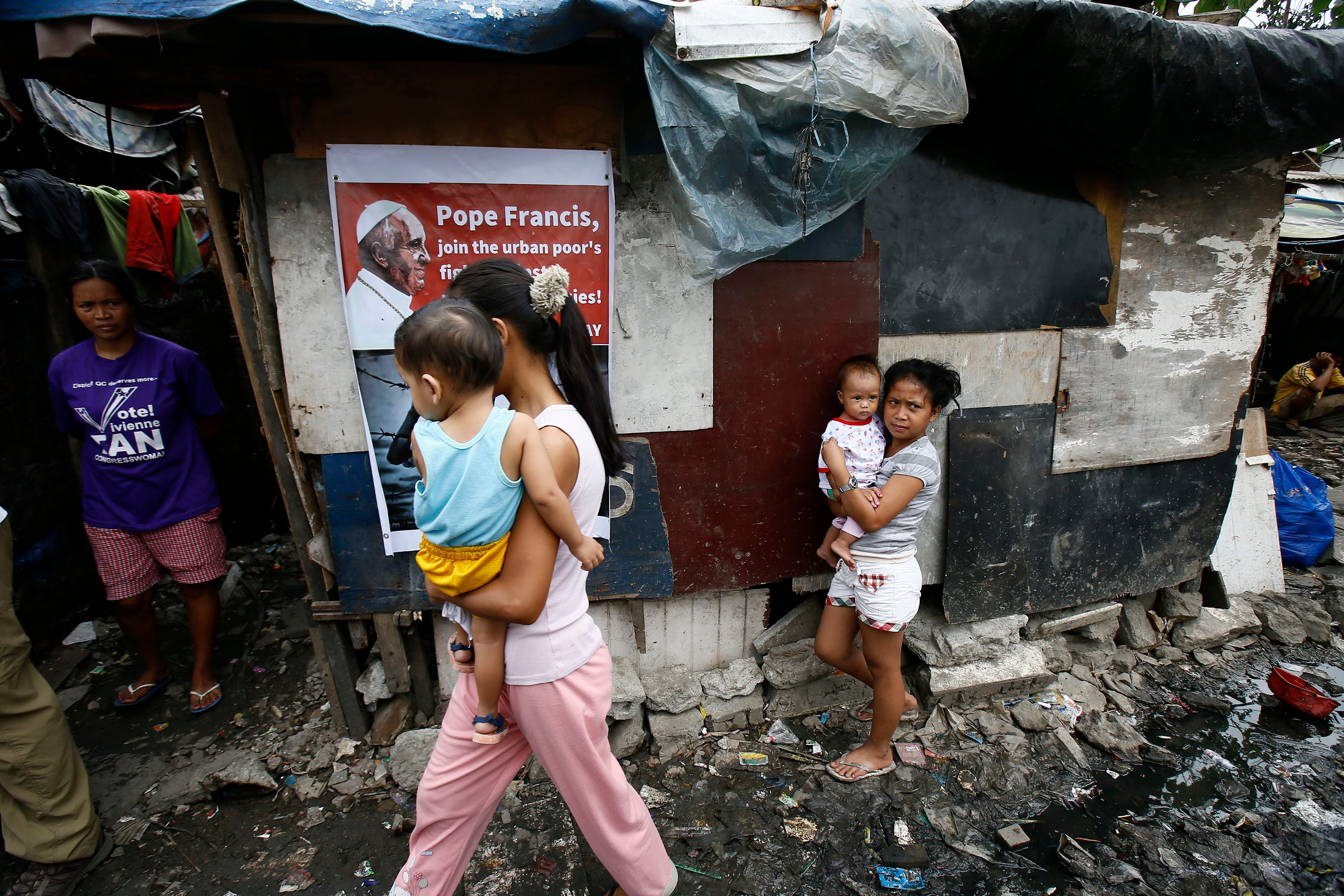
Conditional cash transfer program
What it is: The conditional cash transfer (CCT) program is the Aquino government’s flagship poverty alleviation project. Also known as the Pantawid Pamilyang Pilipino program, it provides conditional cash grants to poor households, who are identified through a national household targeting system.
To qualify for the cash grants, beneficiaries must commit to send their children to school and have them go for medical check-ups. Pregnant women must avail of public health care, while parents are required to attend family development sessions.
In March 2013, the World Bank praised the CCT, saying the program is “on track to meet the goals of keeping children healthy and in school.”
Despite this, the CCT has been accused of being a dole out program. The Department of Social Welfare and Development (DSWD), which oversees the program, has also been accused of funding beneficiaries who were “not really poor.” Critics have also questioned the department’s big budget for the CCT in 2015, despite a drop in the number of beneficiaries.
Took effect: 2008
What’s being questioned? On March 14, 2011, former senator Aquilino Pimentel Jr and two barangay officials asked the Supreme Court to invalidate the CCT after P21 billion ($46 million) in cash grants was allocated in the 2011 national budget.
They claimed that with the CCT, the national government was encroaching on the power of local government units (LGUs) to provide basic services.
The CCT leads to a “recentralization of the already devolved functions” of the government under Republic Act 7160 or the Local Government Code of 1991, the petitioners said.
Status: The program is ongoing. In a ruling dated July 17, 2012, the High Court said the CCT was constitutional and that it didn’t encroach on the authority of LGUs. The Court added that the Local Government Code does not preclude the national government from implementing national programs.
As of March 2015, the program covers 4.42 million families, with a total of P9.2 billion cash grants given out to beneficiaries. For 2015, the CCT program has a budget of P64.7 billion.

Disbursement Acceleration Program (DAP)
What it is: The Disbursement Acceleration Program (DAP) is a spending reform measure that transfers unused funds and savings from slow-moving projects of one department to priority projects.
In September 2013, the program became controversial after indicted Senator Jinggoy Estrada alleged that funds from the DAP were given to senators in May 2012 in exchange for votes to impeach former Chief Justice Renato Corona.
Budget Secretary Florencio Abad admitted that money was given out, but claimed that they were not bribes. Meanwhile, the Aquino government has defended the program, saying it was necessary to fast-track economic growth.
Took effect: 2011, based on a memo from the budget secretary seeking approval from the President to implement DAP.
What’s being questioned? In late 2013, 9 petitions were filed with the High Court questioning the constitutionality of the DAP. Lawmakers, such as Senator Miriam Defensor Santiago, former Senator Joker Arroyo, constitutional framer Fr Joaquin Bernas Jr, and former Budget Secretary Benjamin Diokno said that the DAP, as an “invention” of the executive branch, had no legal basis.
Critics questioned whether it was legal for the executive to transfer funds from one branch of government to another, and to declare unused appropriations and unused allotments as savings based on National Budget Circular 541.
The petitioners also said that the executive overstepped its bounds because the DAP allows Malacañang to augment items in the budget, which is within the duties of the legislative department. (TIMELINE: The rise and fall of DAP)
Status: Struck down. On July 1, 2014, the High Court declared 3 schemes under DAP unconstitutional.
The Court declared as unconstitutional the creation of savings prior to the end of the fiscal year and the withdrawal of these funds for implementing agencies; the cross-border transfers of the savings from one department to another; and the allotment of funds for projects, activities, and programs not outlined in the General Appropriations Act.
In February 2015, the Court partly granted the motion for reconsideration filed by the Office of the Solicitor General, reversing its ruling on the act under DAP pertaining to the funding of projects, activities and programs that were not covered by any appropriation in the GAA.
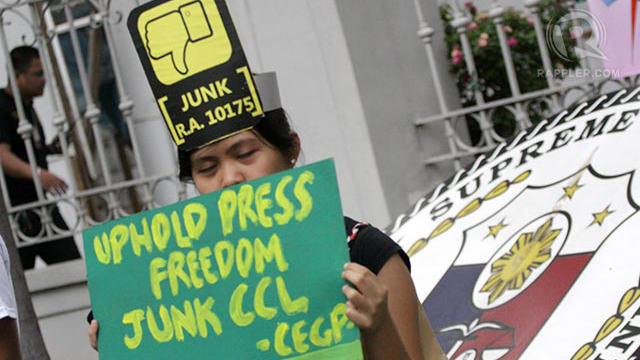
Cybercrime Law
What it is: Republic Act No. 10175 or the Cybercrime Prevention Act is a law that defines cybercrimes and penalizes illegal acts committed online. It was signed 11 years after a first version was filed in Congress.
It became controversial in 2012 because of provisions on online libel and fears of censorship and giving unreasonable power to law enforcement agencies.
The House of Representatives initially removed the provision on online libel in 2011, but it was reinstated in the Senate version in January 2012.
Took effect: Signed on September 12, 2012, and took effect on October 3.
What’s being questioned? At least 15 petitions were filed by lawyers, party list groups, media groups, and other sectors against the cybercrime law in October 2012. The petitioners wanted the law struck down on the following grounds:
- It violates press freedom particularly the provision that penalizes online libel
- It grants the justice department power to shut down websites based on prima facie evidence of libelous content (the so-called “takedown clause”)
- It restricts fundamental rights to freedom of speech
- It creates a “chilling” effect on freedom of expression.
- It violates the right against double jeopardy by raising penalties for crimes already in the Revised Penal Code
Status: Upheld, but with 3 provisions struck down.
In its February 2014 ruling, the High Court upheld the cybercrime law, but struck down 3 provisions.
- Section 4 (c)(3) which pertains to unsolicited commercial communications
- Section 12 which pertains to real-time collection of traffic data
- Section 19 which pertains to restricting or blocking access to computer data
The controversial provision on online libel was upheld, but with an exception – it only covers the original author, not recipients of a defamatory post nor netizens who react to one.
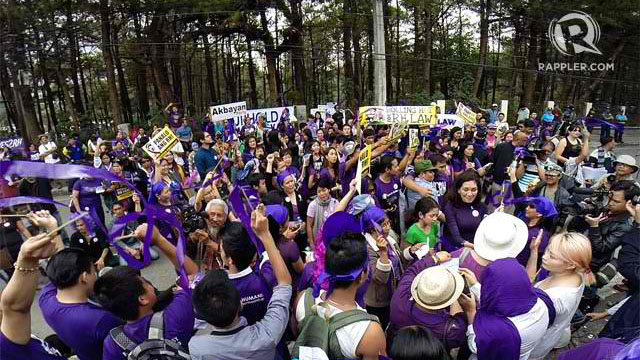
Reproductive Health bill
What it is: Known as Republic Act No. 10354 or the “Responsible Parenthood and Reproductive Health Act of 2012,” the RH Law provides universal access to reproductive health services and information. Among other things, it funds the distribution of contraceptives, requires government hospitals to provide RH services, and mandates sex education classes in public schools. Advocates said the law will also help lower the number of maternal deaths.
While discussing the backlog in textbooks and classrooms during his 2012 SONA, Aquino mentioned that responsible parenthood may be the key to address the huge number of students enrolling every year.
The controversial law – fiercely opposed by the Catholic Church – was signed after 13 years and 4 months in Congress in December 2012. It was hailed as a “Christmas gift” to Filipinos by the law’s advocates, despite strong pushback from influential church leaders.
In March 2013, the health department approved the implementing rules and regulations for the RH law.
Took effect: Signed on December 21, 2012
What’s being questioned? In March 2013, the Supreme Court temporarily stopped the implementation of the RH Law after 14 petitions were filed by individuals and religious groups questioning its constitutionality.
The Catholic Church has vehemently opposed the law, calling it “evil” and “anti-life.” Other critics claimed that the law violates freedom of religion and the “right to life” provision of the Constitution.
Former Senate President Aquilino Pimentel Jr argued that the law violates the “autonomy of local governments” by requiring LGUs to promote reproductive health.
One of the petitions also claimed that the RH law was illegal because it “mocks the nation’s Filipino culture – noble and lofty in its values and holdings on life, motherhood and family life.”
Status: Upheld, but 8 provisions were struck down partially or in full.
Advocates of the law, however, said that 6 “core” provisions of the law were left untouched, and that the provisions struck down by the court did not diminish the law.
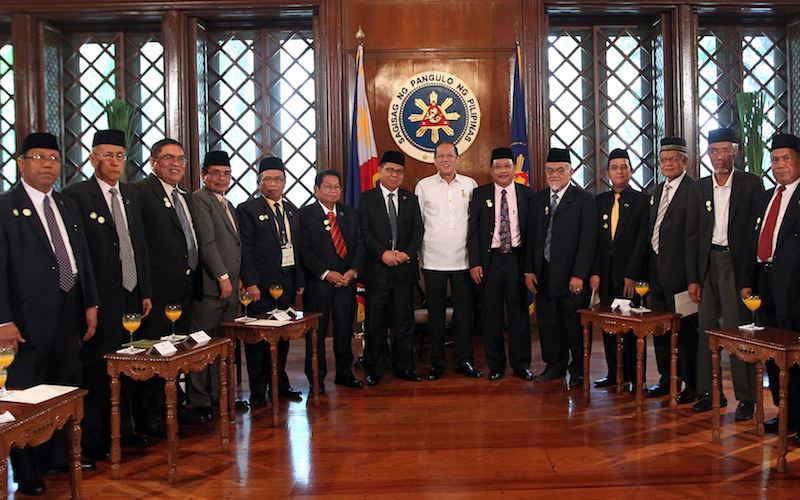
Bangsamoro Basic Law
What it is: The proposed Bangsamoro Basic Law aims to implement the peace deal between the government and rebel group Moro Islamic Liberation Front, in a bid to end 4 decades of armed conflict in the southern Philippines. The proposed bill seeks to create a parliamentary form of autonomous region in Mindanao.
Peace in Mindanao was a frequent refrain in many of Aquino’s SONAs. In 2014, he told the nation: “We are currently forging the proposal for the Bangsamoro Basic Law. We ask for the Congress’ understanding regarding this. It is important to scrutinize each provision we lay down. To the best of our ability, we aim to advance a bill that is fair, just, and acceptable to all.”
Took effect: The Framework Agreement was signed in October 2012. The Comprehensive Agreement on the Bangsamoro was signed in March 2014. Lawmakers had hoped to pass the bill by October 2015.
What’s being questioned? There are at least 4 petitions against the proposed law and the peace deal forged between the government and the MILF. Critics said the Bangsamoro deal is unconstitutional, and that it “appears to facilitate” the secession of the Bangsamoro region.
In June 2015, a group led by the Philippine Constitution Association and Leyte Representative Ferdinand Martin Romualdez asked the High Court to junk the proposed law as unconstitutional. They said their petition “seeks to avert the destruction of the Republic of the Philippines, the dismemberment of its territory, the fragmentation of its people, the despoliation of its natural and human resources, and the wreckage of its tripartite system of government.”
Status: In June 2015, the Court junked the “premature” petition against the draft law.
Its progress in Congress has also been stalled because of the Mamasapano encounter, which saw elite cops clash with MILF rebels.
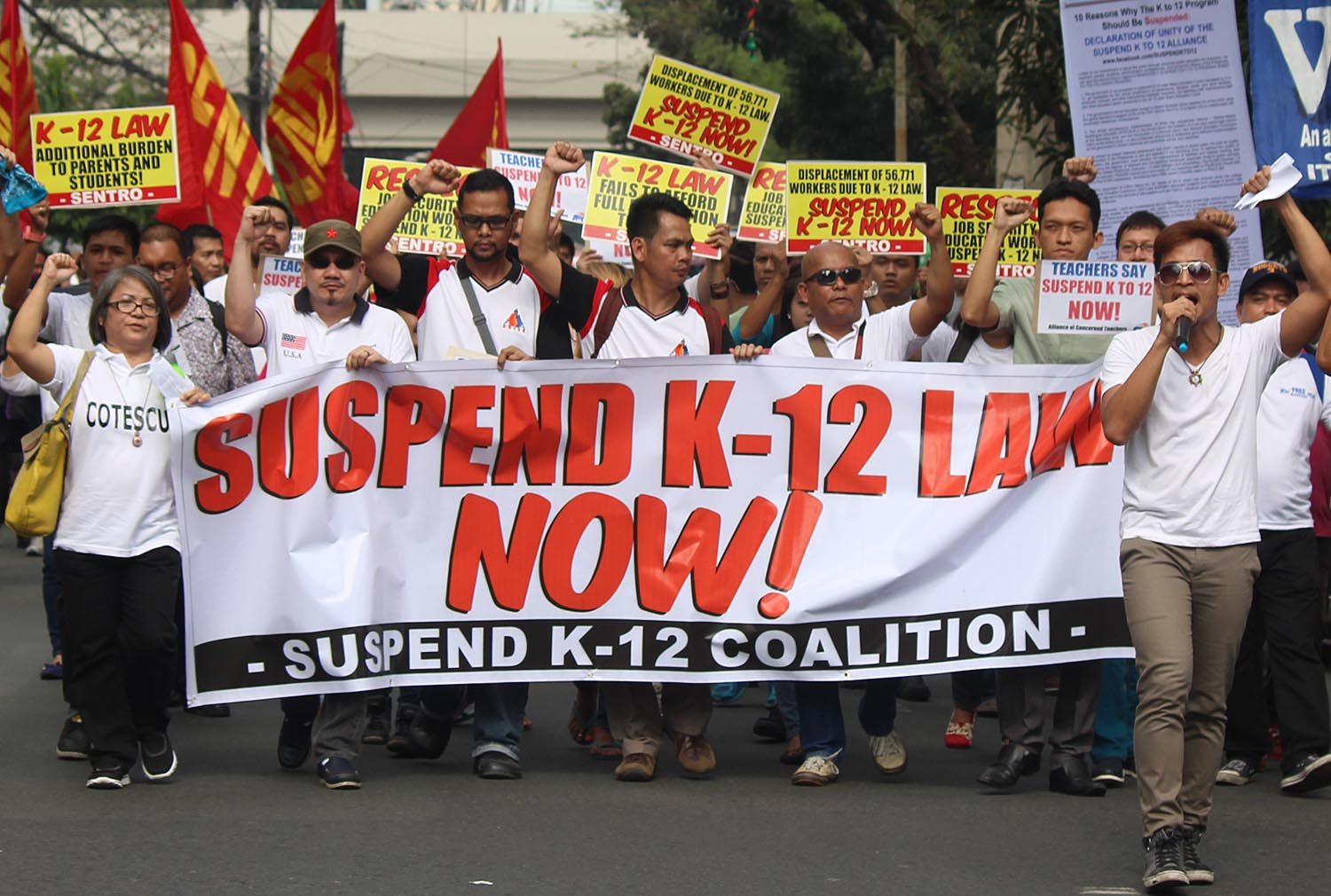
K to 12 program
What it is: The Enhanced Basic Education Act of 2013, commonly known as the K-12 program, adds two years to the basic education system. Students will now go through kindergarten, 6 years of primary education, 4 years of junior high school, and 2 years of senior high school before heading into higher education.
In pushing for the K-12 program, the Department of Education promised that graduates will be ready for employment in various industries.
Critics, however, said the Philippines isn’t ready for K-12 because of the backlog in classrooms, textbooks, and teachers that needed to be addressed. Some sectors are also concerned about the massive displacement of teaching and non-teaching staff because of the program.
Took effect: Signed on May 15, 2013
What’s being questioned? At least 5 petitions cited labor issues, the inadequacy of a P29-billion transition fund for the program, and questions on the law’s constitutionality as basis for junking the program.
Petitioners, such as the Suspend K to 12 alliance, said the program violates constitutional provisions on right to education, labor, and the economy.
Status: The program is still in effect. The Supreme Court has ordered the consolidation of all petitions challenging the controversial program.
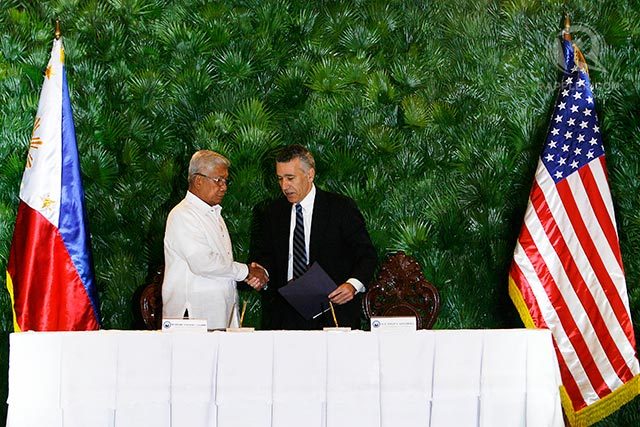
Enhanced Defense Cooperation Agreement
What it is: The Enhanced Defense Cooperation Agreement is a 10-year agreement that allows the US military to build its own facilities and preposition its defense assets inside assigned Philippine military bases.
It was signed amid growing tension between the Philippines and China in the West Philippine Sea (South China Sea).
Took effect: Signed on April 28, 2014, before the state visit of US President Barack Obama, but it has not yet been implemented.
What’s being questioned? Petitioners criticized the lack of transparency in the signing of the deal, and said that it is not an executive agreement but a treaty that should be ratified by the Senate.
Lawyers, academicians, activists, and former lawyers also wanted EDCA to be declared unconstitutional because it is “contrary to national interest” and “will result [in] an unlawful use of public funds.”
Another petition argued that EDCA deprives the country of its “power to tax, an incident of sovereignty,” as “agreed locations are made available to the US rent-free.”
Status: Still no Supreme Court ruling as of April 2015. Oral arguments were held in November 2014. – Rappler.com
Add a comment
How does this make you feel?
There are no comments yet. Add your comment to start the conversation.